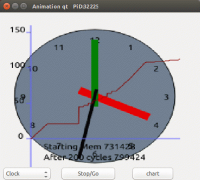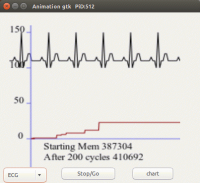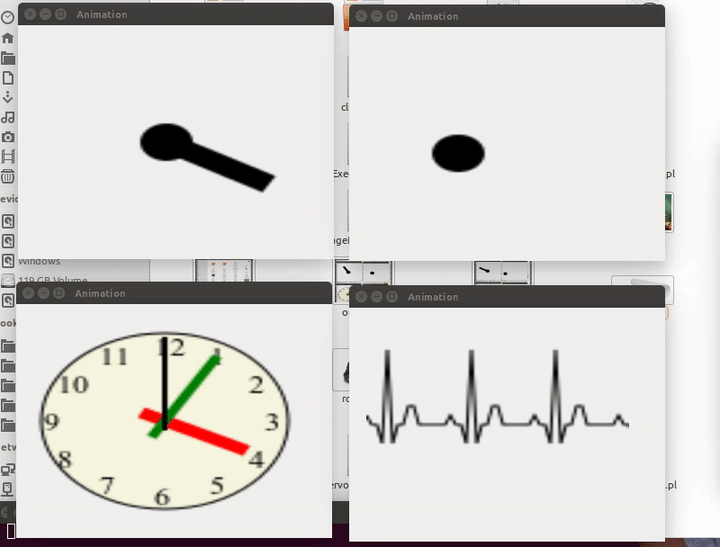Circular observations
Selfies demonstrate one of the principal laws of physics, psychosocial development of teenagers and programming. The act of observation alters that which is being observed. It becomes more complicated if the observer is observing itself. As the observer changes, so might future observations particularly if the tool being used is known to impact the parameter that is being measured; rapidly one loses hope that any meaningful data will be obtained from such a direction of development. Sounds gibberish? Look at the collection of "duckfaces" on your teenage daughter's phone (if she ever lets you near it) and I am sure you will find no resemblance of those images to anyone you would recognise as your offspring.
Let's do it any way
It is so with programming. But let's not let that stop us from still trying eh? The problem I alluded to in my last blog post regarding memory leaks in some GUI back ends offers such an opportunity. I had observed these leaks when trying to use timers to do animations. The way these animations were created was by creating a simple svg file, and altering that file in Perl, saving it, and inserting that file into an image panel, and repeating. A slowdown was noted with some back-ends , and using top, one can see the memory being consumed by that Perl interpreter process progressively rising.
I want to automate this measurement, and visualise the output graphically. But I don't know the pid of the process until I start the application. But my application knows its own pid. And my application itself can generate graphics. It can measure how much memory it uses, storing the data captured in an expanding data structure (an array) using changing amounts of memory, and using a subroutine that takes time and memory itself. It can then generate an SVG chart which gets more data points added each cycle, saving it and reloading it using processes that itself are suspect in memory leaks, and finally rendering this graph on the leaky UI. A fun-filled fool's errand that may deliberately exaggerate leaks thus demonstrating and identifying problematic systems while not, at first glance, offering fine grained analysis.
The pmap <options> <pid> system command (Linux).
$$ in Perl gives us the Process ID. Passing this as a parameter to pmap delivers a running application's memory footprint. It not only describes the total memory it uses but also subdivides the amount by internal structures which may give more clues as to what may be hungry for RAM. We can (for now) discard all the extraneous data and focus on the last line of the output (containing the total memory used) and progressively generate a chart of the excess memory being used with each cycle within the application and deliver it to the image panel widget in the UI.
sub memRequired{
my $mr=`pmap $$`; # call pmap
$mr=(split('\n',$mr))[-1]; # get last line
$mr=~s/[^\d]//g; # just keep numeric portion
return 1*$mr;
}
Keeping an eye on the ball
 The animation script from before is now modified to allow selection of which animation is being done. The animation may be stopped without stopping the timer, and It is also possible to overlay the chart on top of the other SVG animations already playing. So I have done a couple of simple tests. It is clear it is not the timer objects themselves that are directly involved in the memory leak. It is the Image panel update process. Tk and Wx need ImageMagick...but Tk leaks more than Wx. In these tests Qt appears the leakiest (Figure 1) although not obviously using ImageMagick.
The animation script from before is now modified to allow selection of which animation is being done. The animation may be stopped without stopping the timer, and It is also possible to overlay the chart on top of the other SVG animations already playing. So I have done a couple of simple tests. It is clear it is not the timer objects themselves that are directly involved in the memory leak. It is the Image panel update process. Tk and Wx need ImageMagick...but Tk leaks more than Wx. In these tests Qt appears the leakiest (Figure 1) although not obviously using ImageMagick.
 GTK3 and GTK2 both lose no extra memory with SVG animations generally. The slideshow (jpg images once updated every second) appears to show transient extra memory used, going up in step wise fashion, as if dependent on the size of the image displayed (Figure 2).
GTK3 and GTK2 both lose no extra memory with SVG animations generally. The slideshow (jpg images once updated every second) appears to show transient extra memory used, going up in step wise fashion, as if dependent on the size of the image displayed (Figure 2).
 For the backends that do use memory while playing SVG images there appears to be a consistent amounts of memory lost each time. The images have varying complexities, but this seems not to matter...all the svg images are 200px vs 200px. Most animations in these tests update 10 times per second, but clock and the slide show updates the frame once a second. Switching between the 1/10 sec and 1 sec produces a predictable patterns of memory leak.
For the backends that do use memory while playing SVG images there appears to be a consistent amounts of memory lost each time. The images have varying complexities, but this seems not to matter...all the svg images are 200px vs 200px. Most animations in these tests update 10 times per second, but clock and the slide show updates the frame once a second. Switching between the 1/10 sec and 1 sec produces a predictable patterns of memory leak.
I would like to see if there are other ways to put an image into a frame other than using Image::Magick. ImageMAgick does support a huge number of formats though. I would prefer to be able to migrate to Imager. This seems more tightly integratable into Perl.
Re-Entry of GUIDeFATE into CPAN
Any way the timer handling is now more or less uniformly supported across Gtk2, Gtk3, Qt, Wx and Tk. I would not use it for animations in anything other than using the Gtk2/3 options. GUIDeFATE for almost the last year has been not synced with CPAN. Version 0.13 will see it back on GitHub but with some changes. I will be removing the sub-modules from the base path into a folder of its own, so GFTk becomes GUIDeFATE::GFTk, starting 1st October. The latest version on GitHub will also be updated roughly at the same time.
